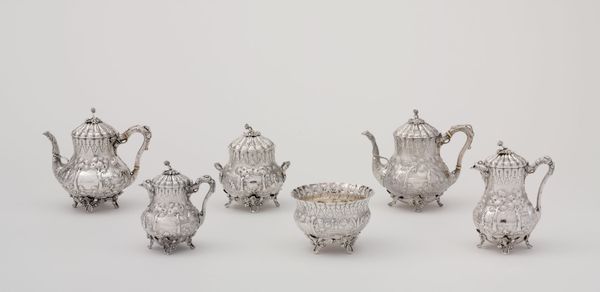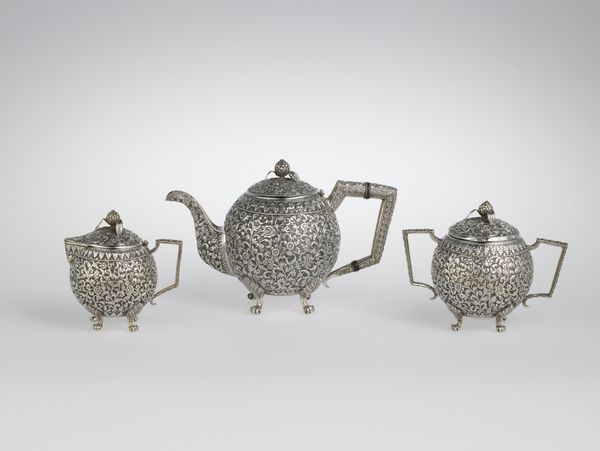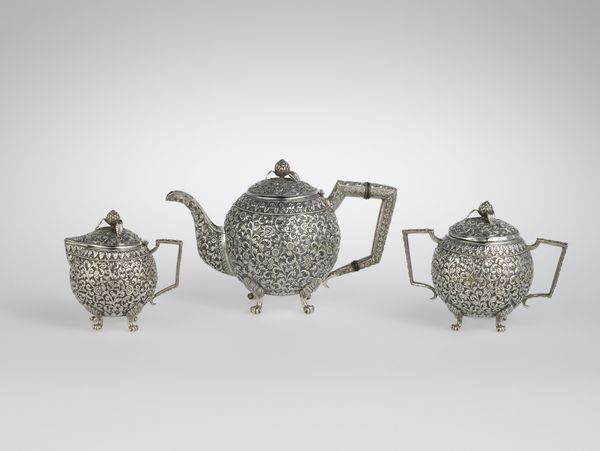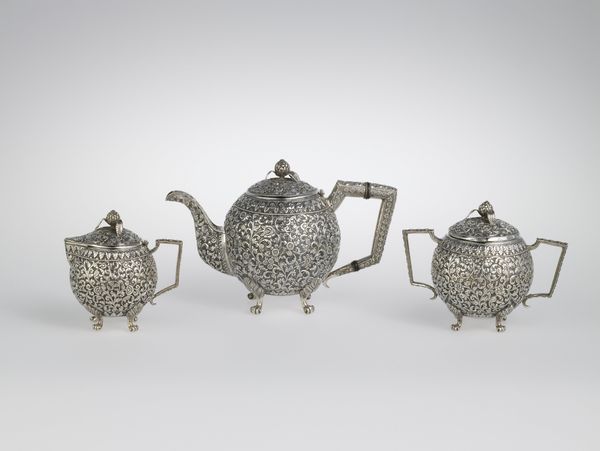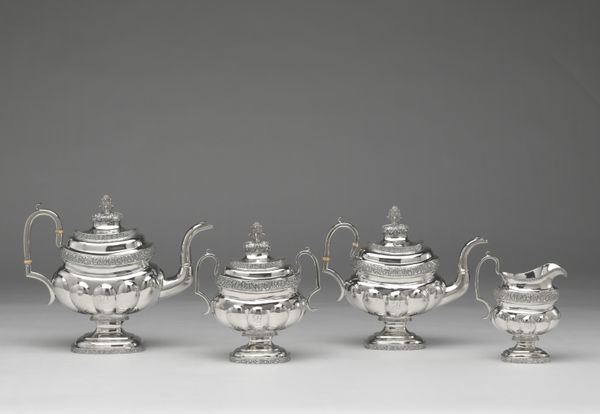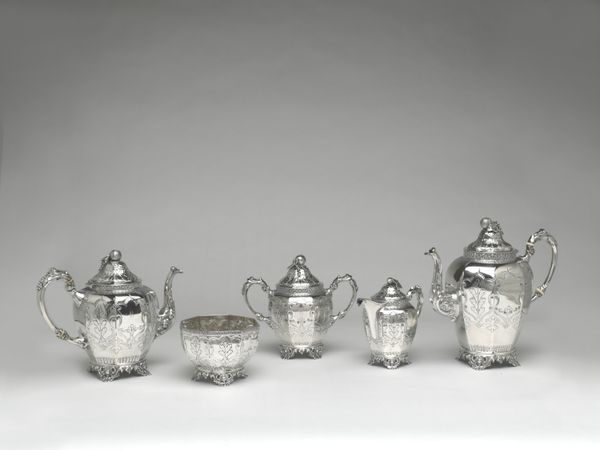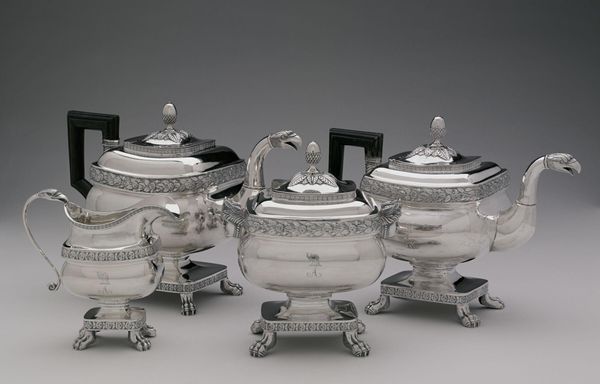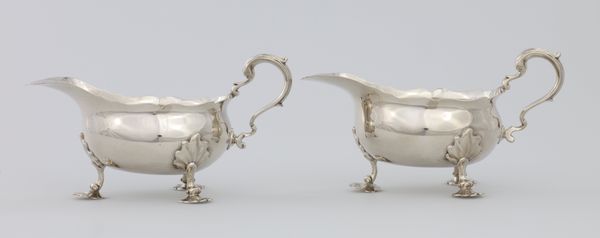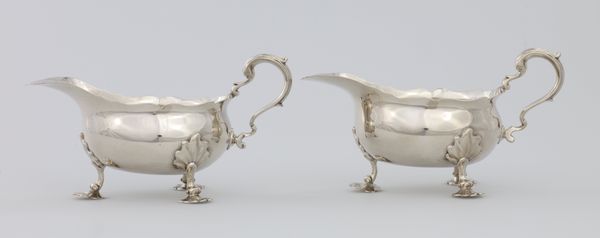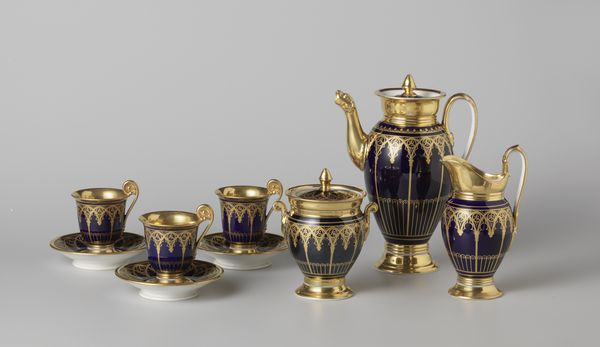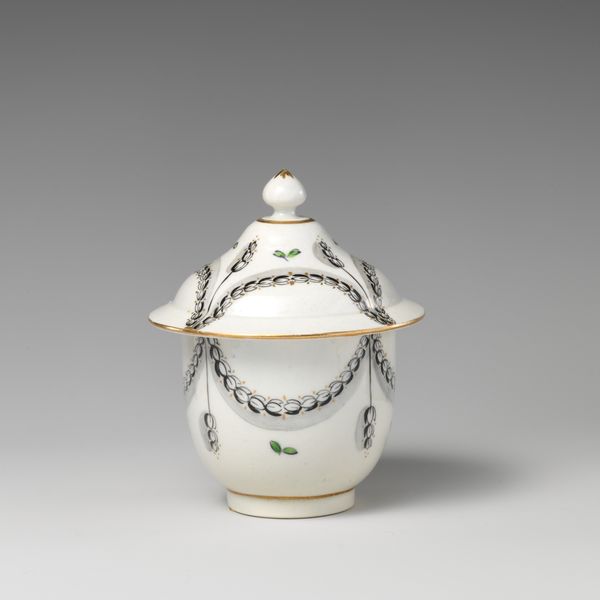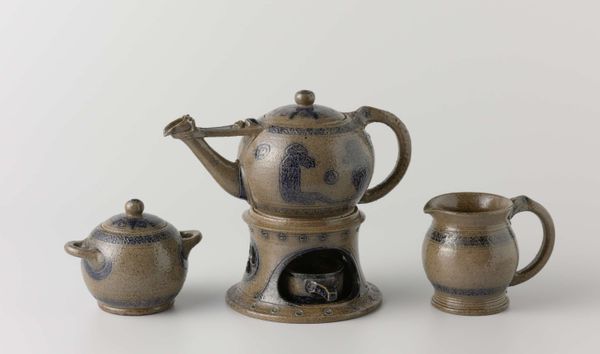
Dimensions: Coffee pot: 27.9 × 15.2 × 33 cm (11 3/4 × 6 1/4 × 13 5/8 in.); Tea pot: 25.4 × 12.7 × 30.5 cm (10 × 5 1/2 × 12 in.) Slop bowl: 12.7 × 20.3 × 20.3 cm (5 3/8 × 8 5/8 × 8 3/8 in.) Sugar bowl: 24.1 × 19.1 × 12.7 cm (9 1/2 × 7 1/2 × 5 5/8 in.) Cream pot: 17.8 × 10.2 × 15.2 cm (7 1/4 × 4 1.4 × 6 1/4 in.)
Copyright: Public Domain
Editor: So, this is "Tea and Coffee Service," crafted from silver and metal between 1811 and 1828. I'm immediately drawn to how ornate it is; it feels so lavish! How would you describe its artistic merit, looking at its form? Curator: The aesthetic appeal resides prominently in the articulation of its constituent elements, adhering rather strictly to rococo principles of form and ornamentation. Observe the asymmetrical balance achieved through elaborate scrollwork and foliage details. Note also, if you will, the cabriole legs, each adding to a sense of elevated opulence. Editor: Yes, it does feel intentionally over-the-top. What's interesting to you about the negative space here, the form and design as a whole? Curator: Indeed, the "negative" space serves as much of a function here as the physical object. The gaps in the metalwork are deliberately balanced against areas of high concentration of detail; in essence, there's a sort of push-and-pull relationship going on, generating visual intrigue, allowing for the eye to roam around its elegant contours, but guided by intention, nonetheless. Note the unity fostered by the recurring motifs upon each piece. Editor: That is intriguing. I never considered that the 'emptiness' could be just as important as the decoration. Thank you! Curator: My pleasure. Remember that understanding this lies in understanding form first, and appreciating material for its inherent qualities second.
Comments
No comments
Be the first to comment and join the conversation on the ultimate creative platform.
